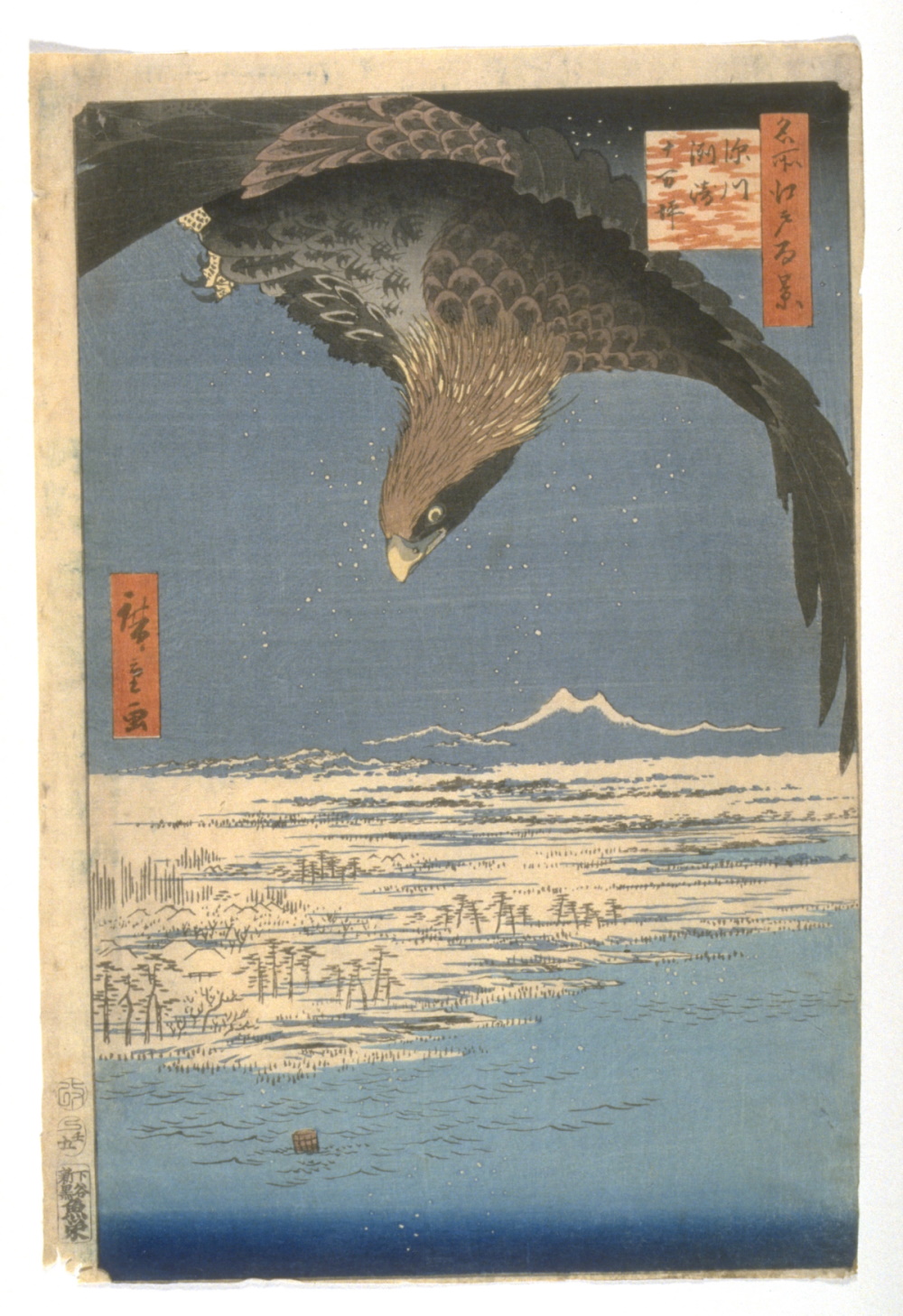
Utagawa Hiroshige
Japanese, 1797-1858
"Fukagawa Susaki and the Jūmantsubo Plain (#107)"
From One Hundred Famous Views of Edo
ca. 1856-1857, Edo period
Color woodblock print on paper
On loan from the University of Michigan Museum of Art
Bequest of Margaret Watson Parker, 1960.2.143
The golden eagle soars over Fukagawa Susaki and Jūmantsubo, a scenic plain near Edo Bay, in this print from a series by Hiroshige titled One Hundred Famous Views of Edo. The series focuses on images of Edo, the headquarters of the Tokugawa shogunate, and this print is in a group of winter scenes. Among his numerous series of print designs, Hiroshige focused on meisho—famous or celebrated places often linked to burgeoning domestic travel. This series, his last, is acclaimed because of the surprising perspectives of the scenes. The title of the series and the individual print are recorded in the upper right corner, and Hiroshige's signature is in the red box on the left.
No mention is made of the eagle in the title, and the famous place is difficult to see because Hiroshige chose a true bird's eye perspective for this scene with night falling and stars appearing in the sky. All that is visible is a snow-covered plain interrupted by a scattering of trees and the roofs of simple houses. Mount Tsukuba is in the background, and Edo bay fills the lower part of the print. Gentle waves move a barrel through the cold water. The viewer wonders what has caught the attention of the eagle—perhaps prey hiding in the reeds.
The eagle seems very close to the viewer because Hiroshige boldly crops the right wing and body. The neck feathers point upward, and sharp talons under the wing indicate readiness to protect or to attack. The bird may be interpreted as the symbol of a deity, Washi Daimyojin, whose shrine was nearby. This powerful raptor may have been a welcome image to a Japan that was on the brink of civil war and that had some of its ports forced open by Western powers several years earlier. Clans with centuries-old grudges against the Tokugawa shogunate began to clamor for a return to imperial rule. For a land beset by such turmoil, perhaps a reminder of strength would find popularity among the people of the capital.
Bibliography
Beasley, W. G. The Meiji Restoration, Stanford: Stanford University Press, 1972.
Smith, Henry D, II. Hiroshige: One Hundred Famous Views of Edo. Brooklyn: George Brazilier, Inc, 1986.